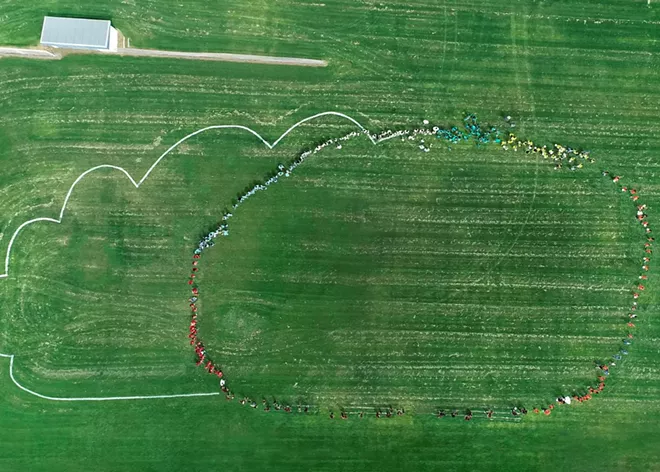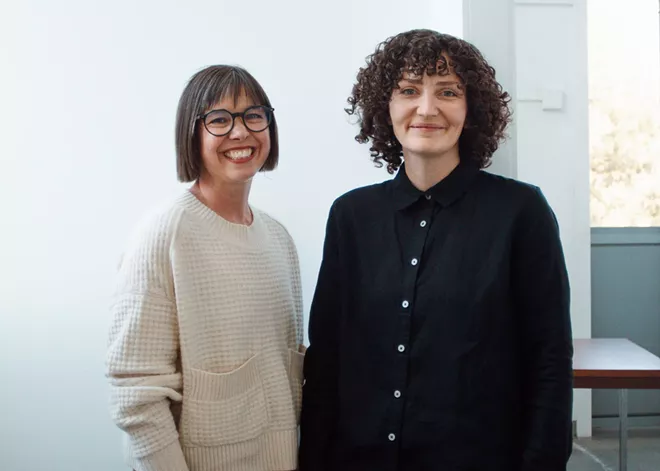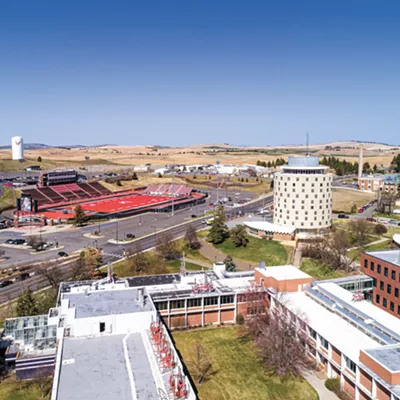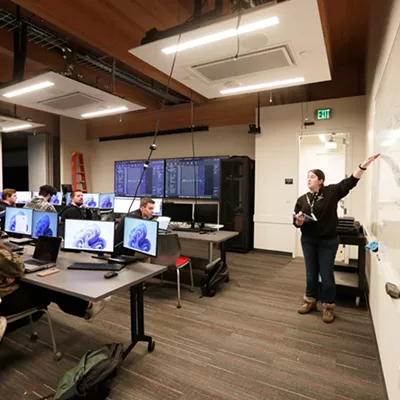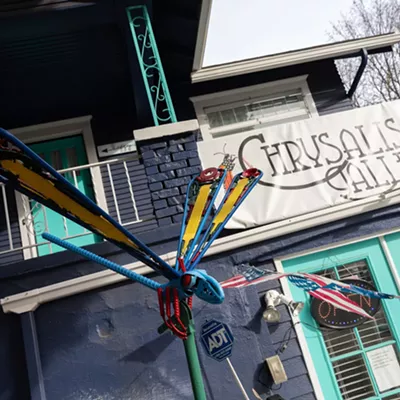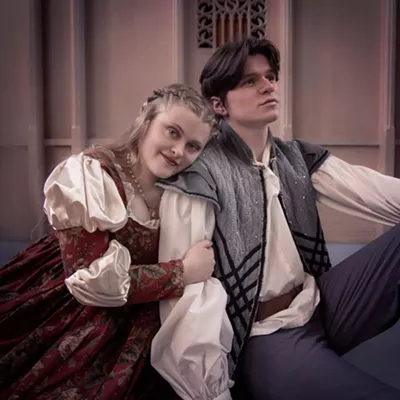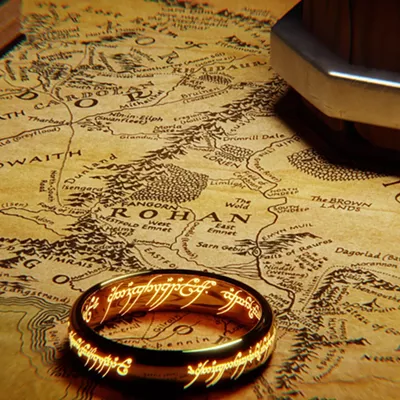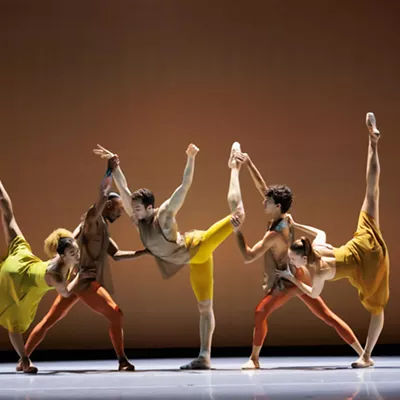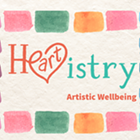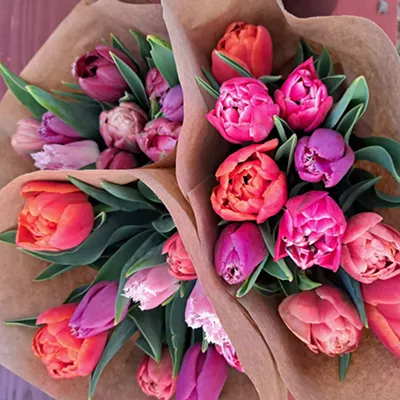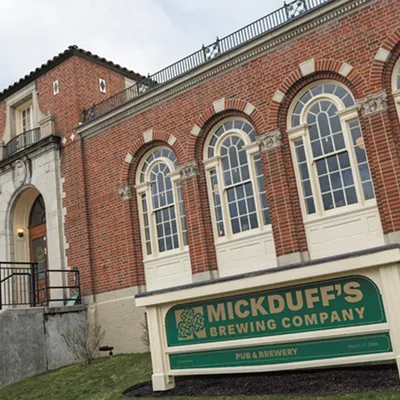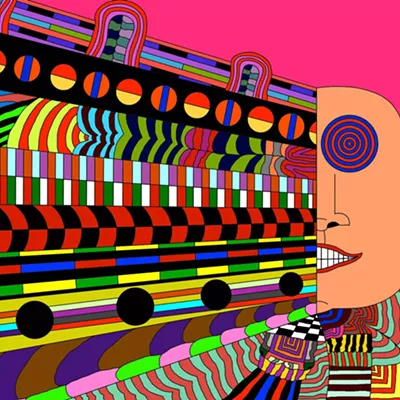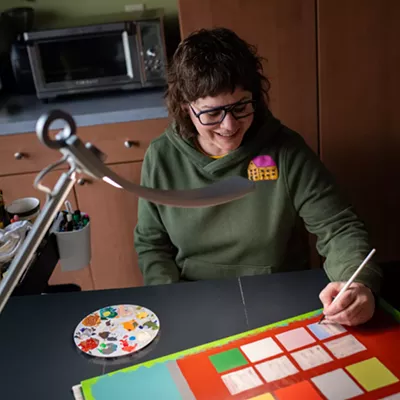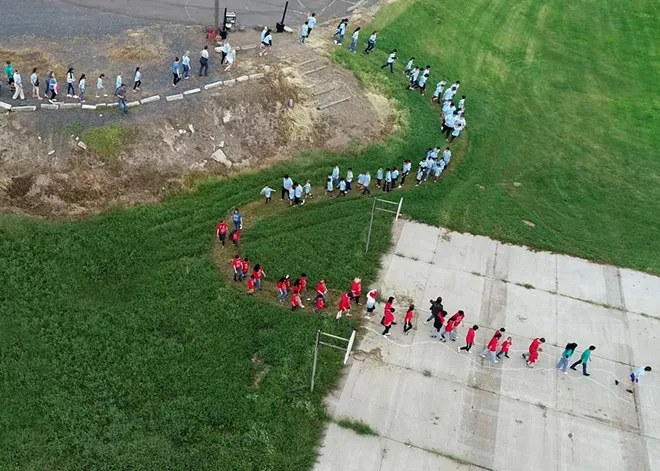
Picture an artwork. Does it oscillate, ambulate or otherwise move? Does it giggle? Or smile? Probably not, as most people picture a painting on a wall or sculpture on a pedestal when they envision art. But for the 245 or so pre-kindergarten through 12th grade students at Prescott School District in Central Washington, art is alive.
Just before summer concluded the 2021-22 school year, students and staff donned brightly colored T-shirts and walked across their school campus. Their path emulated the nearby Touchet River and Whetstone Creek that frame Prescott's western flank. Older kids extended a hand to the littles as the human river coalesced onto the district's playing field. And then, the river became a huge cloud, visible from the air as a continuous line of bright dots — red, orange, turquoise and other rainbow colors — as the students became the artwork, "Embodying the River."
The 2022 art performance, as this type of artwork involving action is called (giggles optional), is one of several components of a yearslong collaboration between Prescott School District and Picture Lab, a Walla Walla-based arts nonprofit, and its Rural Arts Initiative.
"When the River Becomes a Cloud / Cuando el Rio se Transforma en Nube," is both the title of the collaboration and a recently opened art exhibit at Eastern Washington University highlighting the project.
The EWU exhibition features original artwork developed with and by Prescott students, according to organizers Tia Kramer and Amanda Leigh Evans, who have been artists-in-residence with the district since 2021. Prescott high school students who participated in the residency will also share some of their experiences during the closing reception on Feb. 4.
Kramer says she'd just signed on to be a board member with Picture Lab (formerly called the Carnegie Picture Lab) when Prescott Superintendent Justin Bradford was looking for creative ways to integrate art into the district's curriculum.
"[Bradford] basically became superintendent during the pandemic and knew that there wasn't funding to have an art teacher but wanted art in the schools," she says. "I think a lot of superintendents might think, 'Oh, how do we get art teachers here? Or how do we have a couple art classes taught?' And he thought, 'How could we train our teachers to teach art, so art is integrated into all the classrooms? Or could we just have artists that come and make art and then the students experience it because they're making it?'"
That concept, says Kramer, resonated with Picture Lab director Susan Greene, who reached out to Kramer.
"Our vision when we started [working with the school district] was there's a certain perception of what art looks like," Kramer says.
Their challenge, she says, "became how do we really pull every student outside of that expected framework of what art is and show them the vast expanse of what art can look like and how they can access it through whichever means or channel or expression that is of most interest to them."
Kramer and Evans, who collaborate under the moniker DeepTime Collective, refer to the kind of work they do as social practice or socially engaged art.
"I think that in this practice, in this project, the process of making the work and the people who are making it with us are [equally] as important and the research that's going into it," says Kramer, who describes herself as a social choreographer. "They're all part of the practice and part of the result of the practice."
Before they launched "Embodying the River," for example, the pair queried Prescott students and staff about the kinds of art they were familiar with or wanted to see, Evans says.
When people mentioned the immersive Van Gogh exhibit in Seattle, Evans and Kramer had an epiphany.
"We were like, hey, we're going to create an immersive art experience at our school," Evans says.
Projects from the residency, which is ongoing, are organized around several themes. "Celestial Game," for example, features sunrise and sunset images contributed by Prescott staff, students and students' families and affixed to the backboard of two basketball hoops on campus, one east- and one west-facing. "Mapping Our Watershed" incorporates artwork by first grade and high school students.
"When the River Becomes a Cloud" is thinking about cycles, Evans explains. "The way that water cycles through a landscape, the way that people move across borders, the way that birds migrate, and also, we were thinking about agriculture as a form of movement."
Located about 20 miles north of Walla Walla, the region is home to a large Spanish-speaking population, the majority of whom live in a farmworker housing community connected to the region's apple industry. A smaller population of white working-class families, many of whom live in Prescott, population 377, are rooted in dryland wheat farming.
"The apples that are grown in our region go probably all over the world, at least around the U.S.," says Evans.
She notes that media consumed in rural areas is typically produced in urban centers.
"And so we really wanted to create an artwork that was defining what is meaningful from within the school instead of by looking elsewhere to replicate something outside of the school, because I'd be surprised if anyone living in LA or New York City has ever heard of Prescott, Washington," Evans says.
Contemporary art, she adds, "needs to figure out how to be relevant to people from a variety of class backgrounds."
Art is important, says Evans, who describes growing up with a working-class background. She'd never visited an art museum until college and never felt as if she fully belonged in those spaces.
"I believe creative practice is important, and it's deeply human," Evans says. "It doesn't just belong to certain people who have class access to art. And we believe that students at Prescott School deserve a high quality experience with art that asks those questions." ♦
When the River Becomes a Cloud / Cuando el Rio se Transforma en Nube • Thu, Nov. 21-Feb. 4, 2025; open Mon-Fri from 9 am-5 pm • Free • EWU Gallery of Art • 140 Art Building, Cheney • 509-359-2494

